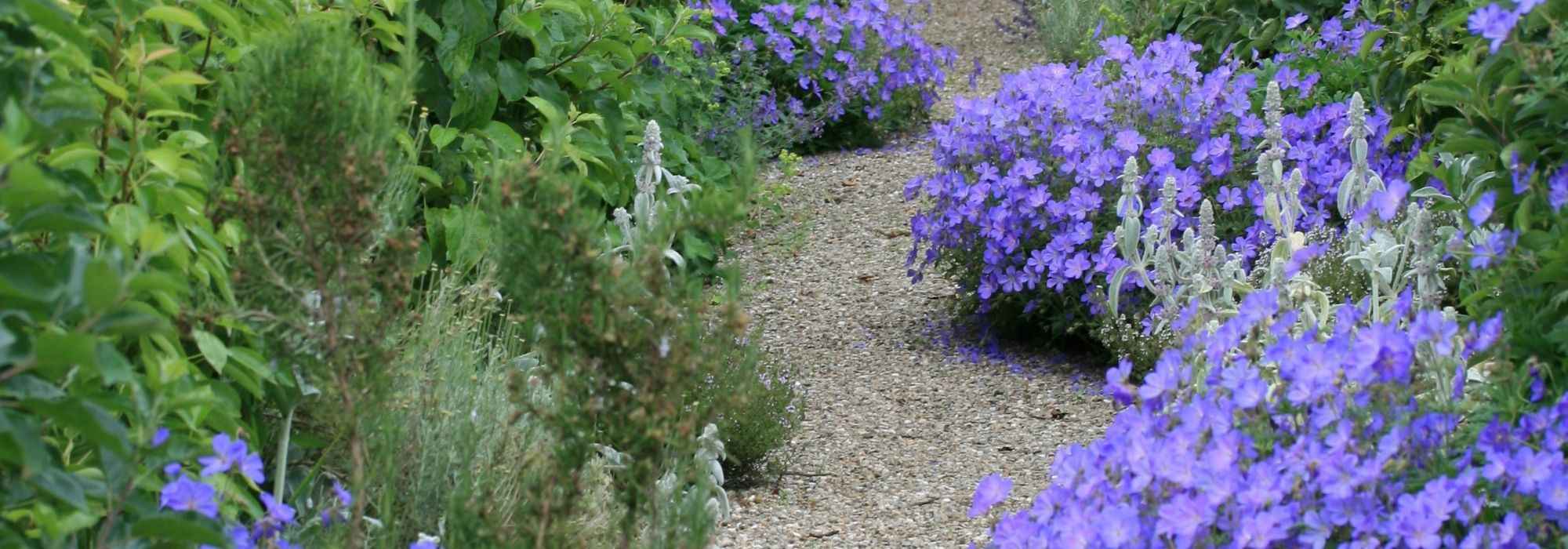
Rock garden: 12 suitable perennials
Reliable choices for a superb scree garden!
Contents
Dry gardens are all the rage! Hotter, more heatwave-prone summers are prompting many gardeners to turn to mineral scree gardens. Easy to create (Olivier sets out all the steps to create them in his article), low-maintenance, they also have the advantage of being water-wise and adding real decorative value to your garden. They can indeed fit into a range of styles, whether modern, more Japanese or ‘zen’. They can also provide a solution for sites that are difficult to plant, such as sloping gardens or those where soil is poor or stony.
Many plants are suited to this type of landscape design, and will grow in gravel or pebbles. In this article, I offer a selection of perennials to consider for your scree garden: floriferous, graphic, original, fragrant, and easy to grow!
African lilies (Agapanthus)
Agapanthus are prized for their striking form, wind resistance and the long duration of their superb flowering, which takes place in summer in large umbels made up of very many trumpet-shaped flowers, and their excellent drought tolerance. Hardy from -5°C to -15°C (species with deciduous foliage are hardier), they can therefore be considered for many gardens, especially as many of them tolerate calcareous soils. Their broad, strap-like green foliage forms an attractive, substantial clump, and some varieties even boast bright, variegated leaves of cream and white, such as Agapanthus ‘Golden Drop’. Ranging from 30 cm to nearly 1.5 m tall, their colours span from deep midnight blue (Agapanthus ‘Black Magic’) to pure white (‘White Heaven‘), with various shades of violet and mauve in between. There are even bicolour varieties (‘Fireworks’) or those with pinkish tones (‘Strawberry Ice’), very original.
→ Find the one for you in our extensive range of Agapanthus!
→ Discover everything you need to know to plant, grow and care for Agapanthus in our guide.
Read also
How to create a gravel garden?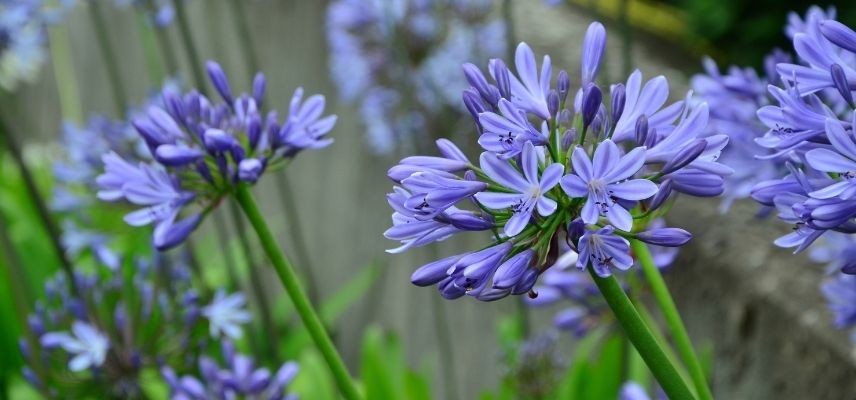
Discover other Well-drained and rocky soil shrubs
View all →Available in 0 sizes
Available in 1 sizes
Available in 1 sizes
Available in 1 sizes
Available in 1 sizes
Available in 1 sizes
Available in 1 sizes
Available in 2 sizes
Available in 1 sizes
Available in 1 sizes
Fleabanes (Erigeron)
Also called Wall daisies, Vergerettes (or Erigerons) are perennials very easy to grow, and which display record flowering, often from May through to autumn. Growing in bushy, spreading clumps, they may not exceed 15 cm across or form cushions 75 cm across. Foliage is light, grey-green, and although this perennial is hardy to -10°C to -15°C, it may become deciduous below -5°C. Flowers appear singly or in groups, in variable shades, from pure white (Erigeron karvinskianus, perhaps the most popular) to lavender blue (‘Azur Beauty’), via pink (‘Rosa Jewel’) or purple (‘Dunkelste Aller’). Yellow centre of these small daisies, whether single or double, contrasts with any colour. Melliferous, Vergerettes can self-seed without becoming invasive. Their undemanding nature and tendency to grow even on walls or in the smallest crevices make them perfectly suited to planting among gravel. In addition, they adapt to all well-drained soils.
→ Find variety that suits you in our selection of Erigerons.
→ Discover our factsheet to learn all about planting and care of Vergerettes.
Read also
10 hardy plants for an exotic dry garden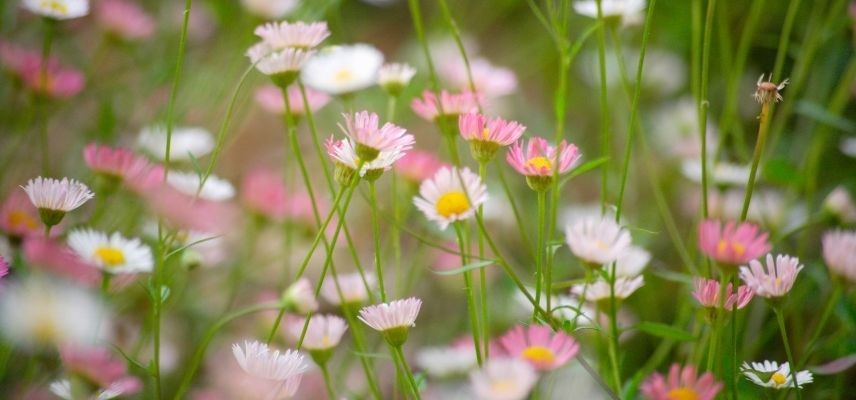
Gauras (Gaura)
Thanks to rapid growth, the Gaura quickly creates an attractive visual effect in flowerbeds. This very popular perennial is a flowering champion, capable of flowering for more than six months of the year, from spring to autumn, and this from its first year. The plant forms a bushy clump with long graceful stems bearing small leaves and adorned with a multitude of papilionaceous flowers that follow one another throughout the season. Colours range from pure white for white Gaura lindheimeri, but there are varieties with corollas veined with cherry red, such as Gaura ‘Cherry Brandy’, or purplish-pink for cultivars such as ‘Baby Butterfly Dark Pink’. Even the foliage contributes to the garden’s colour with choices like ‘Siskiyou Pink’, with purple foliage, or ‘Corrie’s Gold’ thanks to its golden variegation. The Gauras’ deep root system allows them to cope with drought without flinching, and they adapt to any type of soil, even poor, stony and calcareous. If foliage dies back in winter, no need to worry. Plant enters dormancy when winter comes, but can withstand temperatures of around -20°C without flinching.
→ Discover our range of Gaura.
→ Learn all about planting and growing Gauras in our guide!
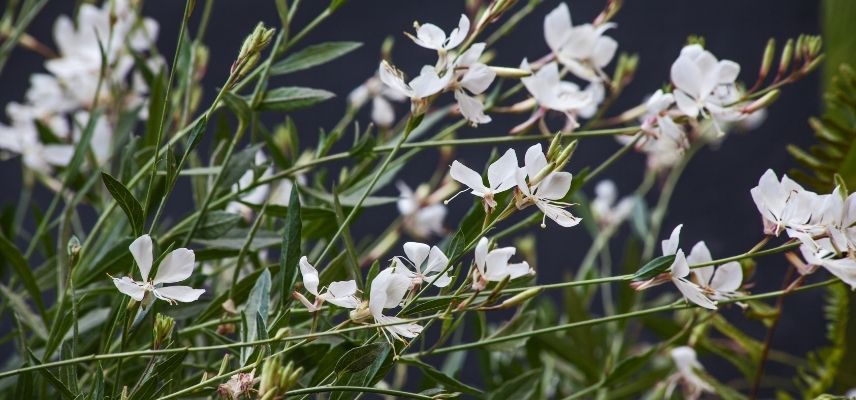
Euphorbias (Euphorbia)
Euphorbias are deciduous to evergreen perennials according to species, very variable in size. Some are true groundcovers (Euphorbia myrsinites forms a tapetum about ten centimetres tall), while others reach much larger dimensions, such as Euphorbia characias, which can exceed 1 m. All feature very unusual inflorescences, made up of tiny flowers highlighted by cup-shaped bracts. They are borne at stem tips and flower from spring through late summer, often in tart shades of yellow and chartreuse green or purplish in Euphorbia ‘Black Bird’. While green predominates, there are also varieties with coloured or variegated foliage, such as Euphorbia ‘Ascot Rainbow’ (blend of green, yellow and pink) or Euphorbia ‘Tasmanian Tiger’ (bluish green marginate with cream). Foliage also varies from species to species, sometimes small and fine, resembling that of a conifer (Euphorbia Little Cypress), more often ovate and elongated. While many of these perennials grow in neat clumps, others spread by stolons, so their spread should be monitored. Adaptable and easy to grow, many adapt to any type of soil, even calcareous, and many are very hardy.
→ In our online nursery, we offer a wide selection of Euphorbias!
→ All our advice on planting, growing and maintaining Euphorbias is in our guide.
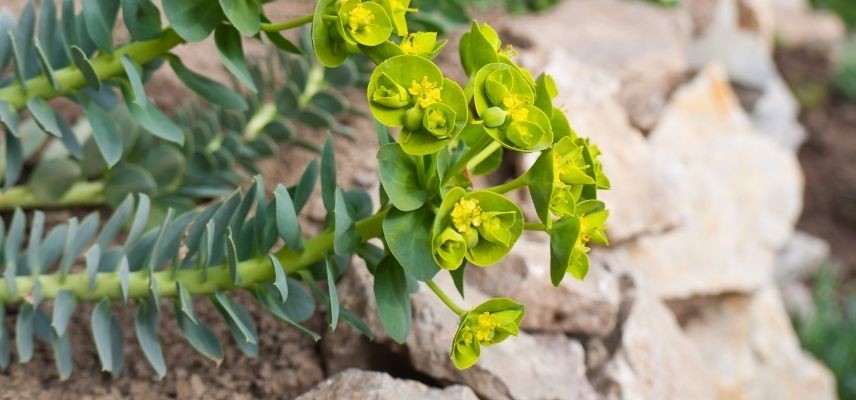
Grasses (Festuca, Stipa, Pennisetum)
- Among the best grasses adapted to dry, poor and stony soils, Fescues top the list. These very undemanding, evergreen perennials, hardy to at least -15°C, form fine-leaved clumps whose regular, mounded and flared cushion habit brings striking graphic appeal all year round. All produce light spikelets, from spring to summer, in golden, silvery or purplish tones. Among the most popular are Festuca glauca ‘Elijah Blue’, a variety about 30 cm all round with steel-blue foliage. Festuca gautieri, of similar dimensions, shows a brash green before turning golden later in season. Festuca mairei, reaching 70 cm, adds pleasing verticality. Low-maintenance, disease-resistant, fescues tolerate any type of soil, and self-seed without becoming invasive.
- Stipas are also perfect candidates. Evergreen, they are prized for the fineness of their foliage, as the popular Stipa tenuifolia (poetically known as Angel’s Hair), or for the elegance of their tall spikes carried high (up to 2 m for Stipa gigantea). Some species also deserve wider planting, such as Stipa barbata or Stipa pulcherrima, whose airy, silky spikes are unparalleled. Some even form colourful orange fountains, such as the beautiful Stipa arundinacea. Hardy to around -12°C on average, they come in various sizes and accept any well-drained soil.
- Another essential group, Pennisetum, or fountain grasses. While some varieties are best kept for mild climates or used more as annuals (Pennisetum x advena ‘Rubrum’ with purple tones and pinkish spikes, Pennisetum villosum…), others are more hardy (Pennisetum alopecuroides, Pennisetum orientale…). These ornamental grasses have an upright, fountain-like habit, more or less flared, and reach up to about 1.8 m for the most vigorous types. The elegance of their silhouette is enhanced by the beauty of their fluffy spikes, which appear in summer in cream, beige, silver, bronze, pink or purple tones (Pennisetum ‘Black Beauty’). To complete the picture, foliage of some varieties takes warm autumn tones (yellow, gold, orange, purple) and, if it withers over winter, it remains decorative throughout winter, especially when hoarfrost encases it. With rare exceptions, pennisetums form well-behaved clumps and are not invasive. They grow in any well-drained soil, even calcareous.
Quick tip: position these daughters of the wind backlit to showcase their inflorescences!
→ Discover our wide selection of Fescues, Stipas and Pennisetums!
→ Learn all about cultivation and maintenance of Stipa and Pennisetums.
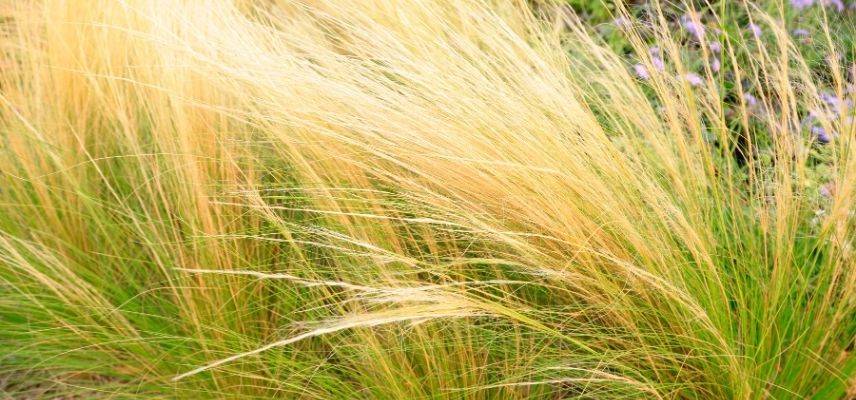
Afghan Sages (Perovskia)
Also called Russian sage, Siberian sage or Afghan lavender, Perovskia is a large woody perennial with a bush-like appearance. Extremely hardy (-20°C) and drought-resistant, it is valued as much for its incomparable architectural form as for its long-lasting summer flowering. In spring, its long stems emerge from the stump to reach up to 1.50 m in all directions for cultivars such as Perovskia ‘Blue Spire’. Silvery-white, they form an erect, very ramified bush with a fairly lax habit, which can sometimes open out a little, especially in rich soil. Some varieties, such as Perovskia ‘Little Spire’ or ‘Blue Spire’ retain a more compact habit. The fine, grey-green foliage is particularly aromatic and diffuses mentholated to camphorous notes. Foliage dies back in cold weather, but the plant retains its structure and thus remains ornamental for many months. Throughout summer, the shoots are covered with small lavender-blue flowers, much visited by pollinators. Of relatively rapid growth and very long-lived, Perovskia takes some time to reach its full potential. Tolerant of lime, resistant to pollution and sea spray, you can consider it across the whole territory.
→ Discover our varieties of Perovskia.
→ Learn to plant, prune and maintain Perovskia in our guide.
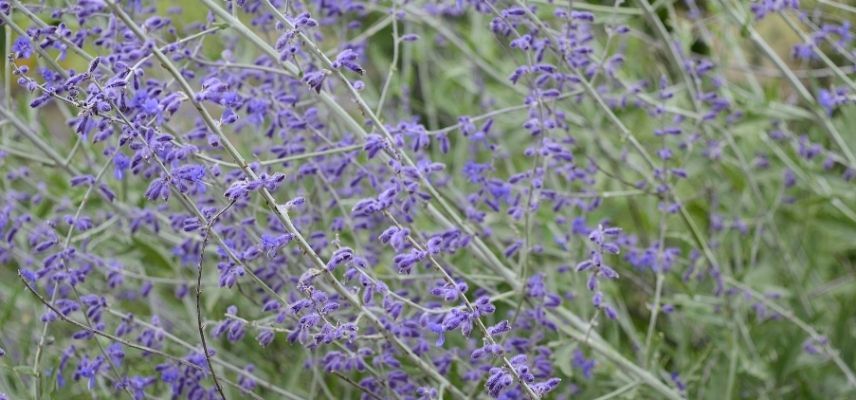
Stonecrops (Sedums, Hylotelephium)
Succulents, or fleshy plants, Orpins or Sedums (sometimes called Hylotelephiums) offer a wide diversity of habits and sizes. Some are true groundcover plants, only a few centimetres high but spreading freely (Sedum oreganum), others adopt an upright habit, up to 50 cm or more (Sedum ‘Autumn Joy’). Creeping varieties are generally evergreen, and foliage is very fine and elongated, as with Sedum ‘Lemon Ball’. Foliage of taller species, such as Sedum spectabile ‘Septemberglut’, is broader, flat, dentate, and deciduous.
Colour palette is equally wide: green, silvery, burgundy, pink, deep purple (Sedum ‘Purple Emperor’) or even variegated (Sedum ‘Atlantis’). These hues change with the seasons in some varieties (Sedum ‘Bertram Anderson’).
Flowering of Sedums, melliferous, occurs from late spring to autumn, in countless small star-shaped flowers, in variable shades (white, yellow, pink, red…). Even after fading, some inflorescences also remain decorative in winter.
Fleshy foliage of orpins provides defence against lack of water, and their root system allows use in arid, shallow soils. Easy to grow, low-maintenance, and hardy down to -15°C to -20°C, give them poor, stony, well-drained soil, even slightly calcareous.
→ Choose from our very wide range of Sedums.
→ Find out all about planting, cultivation and propagation of Sedum.
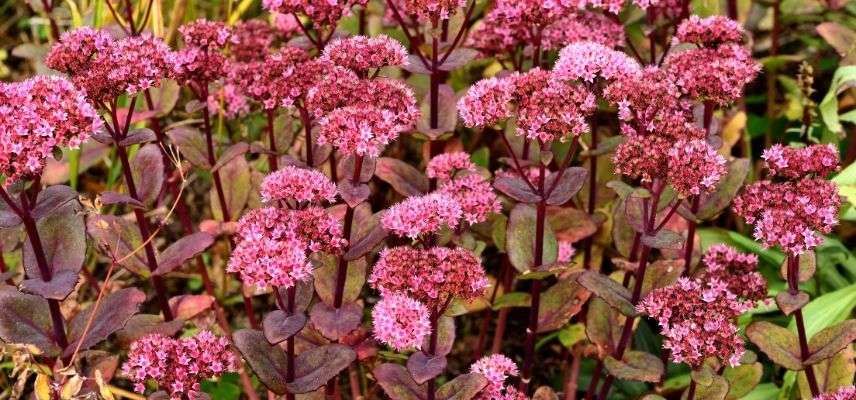
Santolinas (Santolina)
Santolines are Mediterranean woody perennials, common in dry, stony, sun‑baked gardens. Evergreen foliage is fine, divided, soft to the touch and gives off peppery, camphoraceous scents. It can be deep green (Santolina rosmarinifolia), silvery grey (Santolina chamaecyparissus), but there are also varieties with tangy, almost golden hues, such as the very bright ‘Lemon Fizz’. Summer flowering produces small rounded pompom heads, golden yellow in Santolina chamaecyparissus, white for Santolina ‘Edward Bowles’.
Plant forms a dense cushion, 30 to 40 centimetres high on average, and as wide, sometimes spreading to 1 m in good growing conditions. Stems, often prostrate, root easily and allow the plant to spread. Santolina serratifolia displays a more upright habit. With rapid growth, Santolines tend to age poorly (especially in rich soil), but they are hardy to −15°C, melliferous, and tolerate lime. Maintenance is limited to a light annual pruning, cultivation is very easy, and dried flowers last a long time in dried bouquets.
→ Discover our selection of Santolines.
→ How to plant, prune and care for Santolines? All answers in our guide.
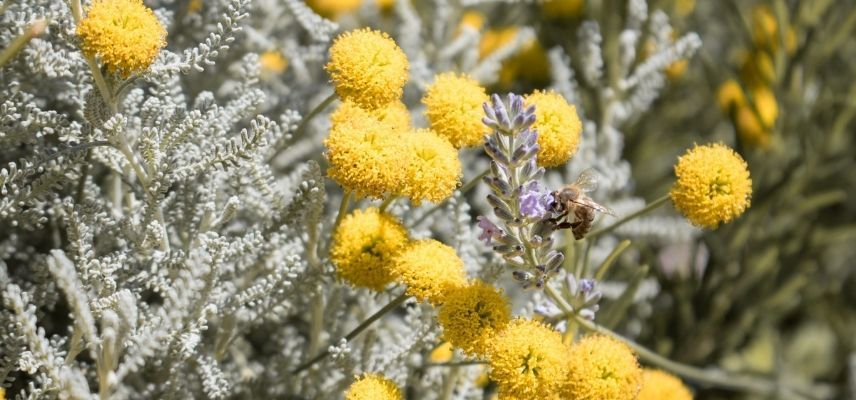
Thymes (Thymus)
Perennial aromatic emblematic of garrigue, thyme (or Farigoule) is hardy to -15°C and can therefore be grown in many other regions. It can form an excellent groundcover, reaching no more than 5 cm in height with 35 cm spreading. Choose colour that appeals — red, pink or pure white. A little taller (15 cm) and with a distinctly spreading habit, long-stemmed thyme easily covers 50 cm. More compact varieties are plentiful, and their unique aromas are irresistible: lemon thyme, orange thyme, pizza thyme (to season Italian dishes!)… Must-haves include wild thyme, with a creeping habit, and the famous Provence thyme. Foliage, evergreen, ranges from bright green and silvery grey to variegated thyme or golden thyme. For aromatherapy fans, resinous thyme is an excellent option. Whatever the variety, drought intensifies the scents, and full sun highlights melliferous flowering, white to pink, which covers the young plant from late spring to early summer. Low maintenance (an annual pruning is sufficient), disease-resistant, perfect young plant to place among gravel.
→ Our nursery offers a very wide selection of thyme!
→ All advice on planting, care and cultivation of thyme is in our guide.
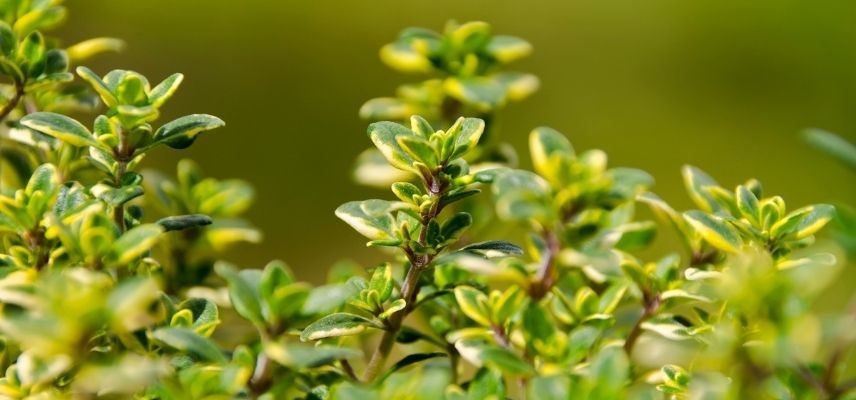
Sea Hollies (Eryngiums)
The Eryngiums, commonly called Panicauts or blue thistles are hardy perennials (-15°C to -25°C), prized for their graphic form, original appearance and ease to grow in dry, poor, rocky soil. The smallest reach only around 30 cm (Eryngium ‘Blue Hobbit’) and fit at front of rock gardens, the background reserved for large varieties such as Eryngium yuccifolium (1.5 m). Deciduous to evergreen depending on species, they all share inflorescences formed of numerous small, melliferous flowers that bloom from summer to autumn. Metallic blue (Eryngium bourgatii), silvery (Eryngium giganteum), white, greenish (Eryngium agavifolium) or even brown (Eryngium ebracteatum), they are surrounded by tapering, dissected, thorny bracts, although some varieties display rounder shapes. Foliage is also often prickly, from a few centimetres to 1.0 m long, in shades of green, silvery or a bright yellow that sets off the inflorescences (Eryngium ‘Neptune’s Gold’). Variegated versions are also available with varieties such as Eryngium variifolium. Highly ramified, Panicauts adopt an upright, more or less regular habit. Not prone to disease, tolerant of sea spray (particularly Eryngium maritimum), they bring added aesthetic value over many months, their inflorescences remaining decorative even when dried.
→ All our species and varieties to discover in our nursery.
→ In our dossier, find all advice to plant, to grow and care for Eryngium.
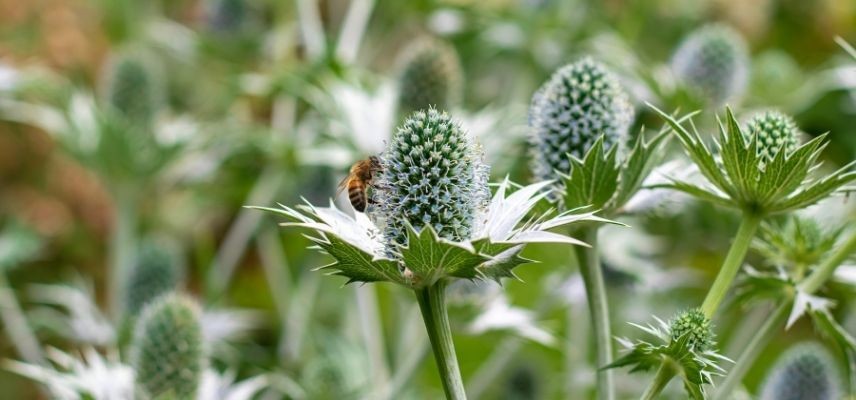
Agaves (Agave)
Agaves are succulent perennials, also called fleshy plants, with a distinctly exotic look. Although their growth is quite slow, they are very long-lived. They most often develop thick, fleshy foliage, guaranteeing very good drought resistance! Moderately hardy, most tender tolerate -5°C, but some species, like Agave havardiana, can withstand down to -20°C in well-drained soil.
The plant develops evergreen foliage, imbricate in a more or less spreading rosette, particularly striking. The smallest specimens reach only a few dozen centimetres (Agave stricta ‘Nana’), but some make an impact with a silhouette visible from afar (such as the very popular Agave americana). Most Agaves have leaves coated with a powdery white bloom and sharp tips, and are sometimes coloured as in Agave montana. Agave filifera prefers, by contrast, to bear fine filaments that make it harmless.
Colours range from green to grey‑blue (Agave parryi), and variegated forms are also available thanks to varieties such as Agave americana ‘Variegata’ or Agave victoriae reginae.
Flowering rarely occurs in our climate, and takes place after at least 10 years of cultivation on average, but the long flowering stalks (up to 10 m in some Agaves!) that emerge from the centre of the rosettes in summer, in flattened inflorescences from yellow to greenish‑white, are unforgettable!
An essential feature of dry gardens, Agave is easy to grow in full sun, in poor, well‑drained, stony soil, even if that soil is calcareous.
→ We offer many Agave varieties on our site.
→ Follow our advice to plant, grow and maintain Agaves!
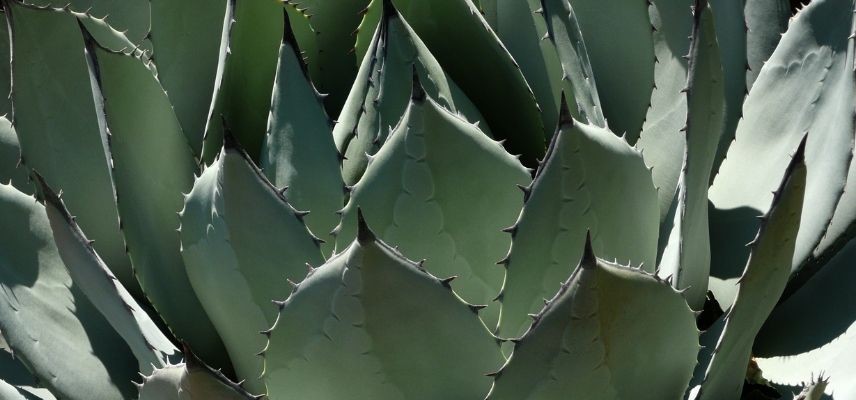
Houseleeks (Sempervivum)
Other succulent perennials, houseleeks, or Sempervivum, are fleshy young plants that can establish throughout the country thanks to their good hardiness (between -15°C and -25°C). These young plants with a cushion-forming prostrate and spreading habit naturally expand thanks to aerial stems that root spontaneously on contact with soil. Their overall appearance is particularly original and graphic. Each rosette of thick, fleshy leaves looks like a flower straight out of a fantasy tale. Not exceeding about ten centimetres in height (a little taller in full flowering), houseleeks bear evergreen leaves densely inserted, more or less long, wide or flattened. Their colours can seem unreal, especially in some varieties such as Sempervivum ‘Silberkarneol’ (pinkish-red on a green base and covered in silky, silvery hairs), Sempervivum calcareum (light green with brown tips) or Sempervivum ‘Chick Charms Gold Nugget’ (light green foliage gradually taking on a bright coppery-orange as days shorten and cold sets in). The variety of colours and shades offered by this genus allows creation of vibrant tapestries of colour, made all the richer as seasons and temperatures cause them to change!
Flowering, which occurs in summer, but only after about 3 years of cultivation on average, is another asset of this easy-to-grow perennial. It takes the form of flower spikes that reach around twenty centimetres. The numerous star-shaped flowers also display colours generally pink, red or yellow, in various shades that make each variety unique. The many petals and stamens create a coloured haze that seems to hover above the soil.
As you will have guessed, monotony does not go with houseleek, and provided you plant them in well-draining soil (especially in winter), and in non-scorching sun (prefer partial shade in regions with very hot summers), even in very little earth they will delight you for many years while requiring very little care!
→ We offer a very wide diversity of houseleek varieties to choose from!
→ All about planting, growing and caring for houseleeks in our fact sheet.
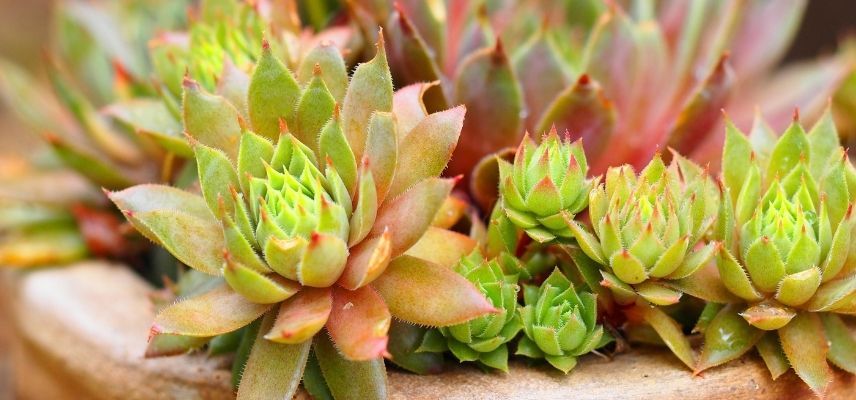
Learn more
Also discover our selection of ideal bushes for a mineral garden.
- Subscribe!
- Contents



































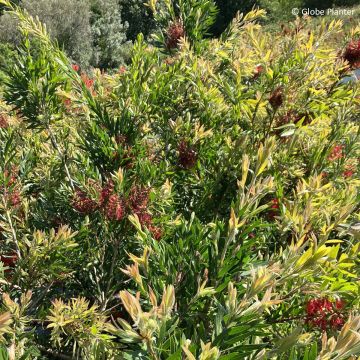
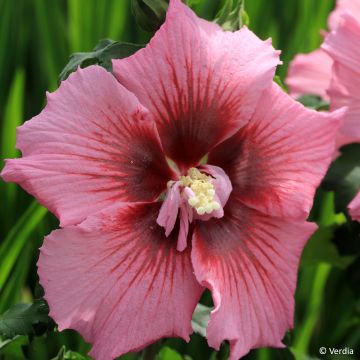
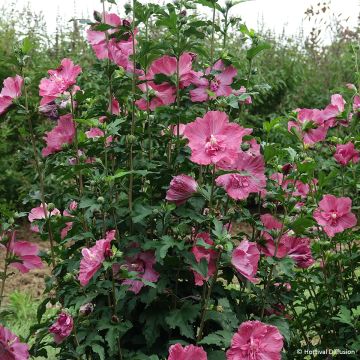


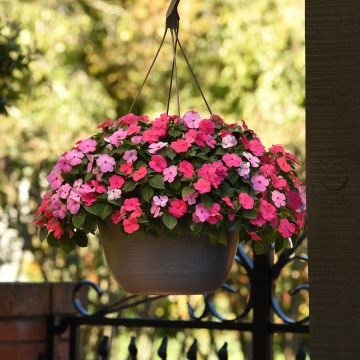
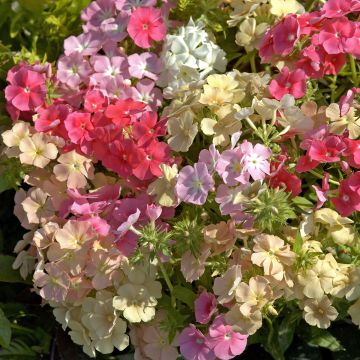
Comments